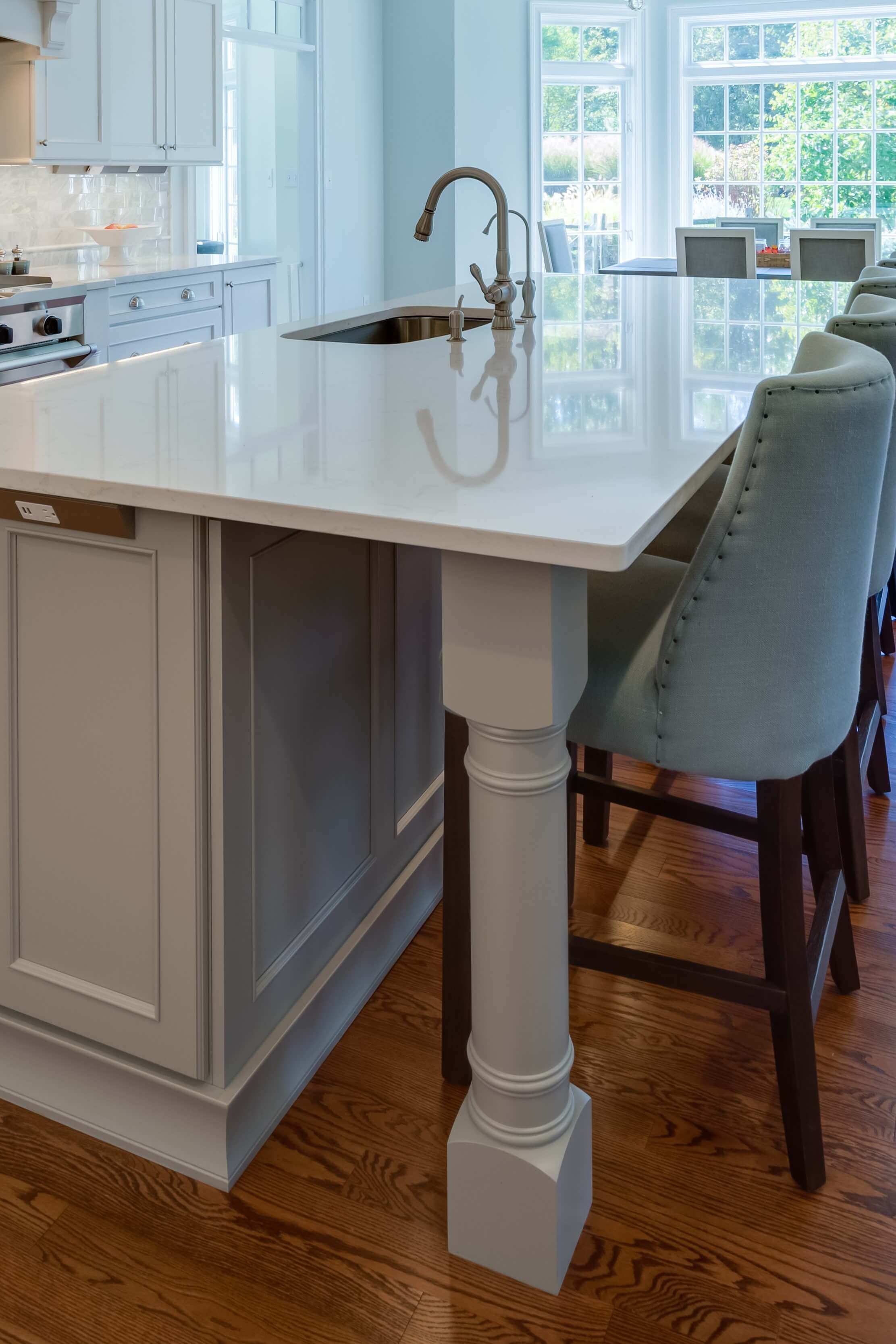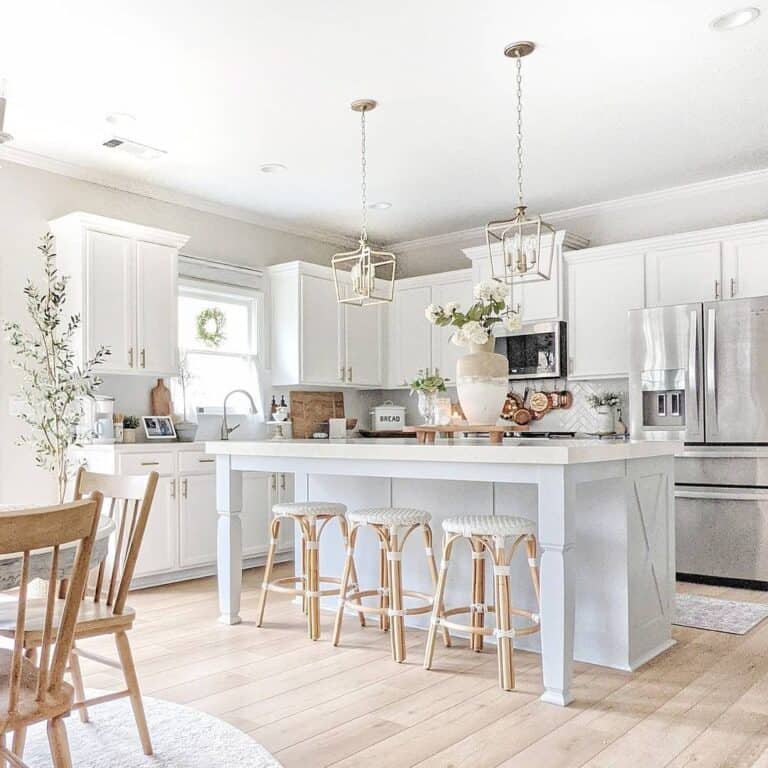Kitchen Island Legs: Enhance Your Kitchen with Solid Assistance
Important Tips for Choosing the Perfect Dining Table for Your Cooking Area
Selecting the excellent eating table for your kitchen area is more than simply an issue of taste; it demands a detailed understanding of your space and needs. The shape of the table plays an essential duty; while rectangular tables fit bigger locations, round ones foster intimacy, and extendable alternatives offer versatility. The table needs to harmonize with your kitchen area's appearances and fit your family members comfortably.
Step Your Area
Selecting the optimal eating table starts with a thorough assessment of your available space. This foundational step guarantees that the table not only fits conveniently within the room but also complements the overall layout and functionality of your dining location.
Take into consideration the circulation of activity around the table. It is crucial to leave ample room for chairs to be taken out and for individuals to walk around the table without obstruction. A general general rule is to permit at the very least 36 inches of clearance from the side of the table to the closest wall or furniture. This makes sure convenience of accessibility and convenience throughout meals.
Additionally, think of the number of individuals you normally captivate and whether you require extra room for guests. Selecting an extendable table can provide adaptability, allowing you to fit differing numbers of restaurants. By accurately determining your space, you lay the foundation for choosing an eating table that enhances both the aesthetics and performance of your eating area.
Select the Right Forming

On the various other hand, round tables are outstanding for smaller sized kitchens or intimate events, as they advertise conversation by allowing every person to deal with each various other. They also supply a feeling of coziness and can fit well in tighter areas as a result of their absence of sharp corners. Oval tables use the best of both worlds, integrating the size of rectangle-shaped tables with the intimacy of round ones, making them flexible for numerous settings.
Square tables are one more alternative, particularly fit for square-shaped areas. They create a in proportion and modern-day appearance, cultivating an equivalent dining experience for all seated. Nevertheless, they might be much less useful for bigger celebrations unless they come with extensions. Ultimately, the shape you select must align with your room dimensions and way of living to guarantee both type and feature.
Material Considerations
When selecting a table, product factors to consider are paramount in identifying the table's longevity, upkeep requirements, and general aesthetic. Wood is a classic choice, offering timeless appeal and effectiveness. Woods like walnut, mahogany, and oak are especially resilient, though they can be costly. kitchen island legs. Softwoods, such as yearn, are much more budget-friendly however may be susceptible to dents and scrapes.
Glass-topped tables supply a contemporary, smooth look and can make a space show up larger as a result of their transparency. They call for frequent cleansing to prevent smudges and fingerprints. In addition, tempered glass is suggested for its extra strength and safety and security.

Finally, composite materials like MDF (Medium-Density Fiber board) or plywood are economical options. These materials can resemble the appearance of solid timber however may not supply the exact same longevity. They are generally less complicated to tidy but can be at risk to water damage if not appropriately sealed.
Ultimately, the option of material need to straighten with your cooking area's style, your way of living go right here needs, and your budget restraints. (kitchen island legs)
Seats Capacity and Comfort
Just how do you figure out the best seats ability and comfort for your dining table? This critical action entails examining both the physical area available in your kitchen area and your home's functional demands. Begin by determining your kitchen area to make sure the table fits conveniently, permitting at the very least 36 inches of clearance around it for easy activity. Consider the variety of people who usually eat together, as this will affect the table size. For a household of 4, a rectangle-shaped table of 48 inches long or a round table with a 48-inch size is generally sufficient.
Convenience is just as important. The height of the table must preferably be around 30 inches, giving a well balanced ergonomic stance for seated diners. Chairs should have a seat height of 18 to 20 inches to make sure a comfy eating posture. Additionally, consider the chair style; upholstered seats and helpful back-rests can boost dining comfort considerably, particularly throughout long term dishes.
Design and Appearance
Picking a table that matches your style and aesthetic appeal includes balancing personal preference with the existing decoration of your eating area. The dining table is frequently the centerpiece of the cooking area, and its style ought to complement the overall motif of the space. Whether your kitchen flaunts a modern-day, minimal look or a rustic, farmhouse beauty, the table you pick ought to harmonize with these components to produce a cohesive and welcoming environment.
Consider products meticulously; wood offers a classic charm and can range from abundant mahogany for a conventional seek to lighter oak for a modern feel. Steel and glass tables, on the other hand, can present a smooth, look at this site commercial side to your kitchen area. Don't overlook the table's form-- rectangular tables are versatile and timeless, while round and oval alternatives can promote a more intimate eating experience.
Furthermore, pay close interest to finishes and details. A troubled finish could add personality and heat, whereas a glossy surface can add to a clean, modern aesthetic. Inevitably, your table should not only fit flawlessly right into your kitchen's design but likewise mirror your personal style, raising the room both functionally and visually.
Conclusion
Finally, selecting the excellent dining table for a kitchen area demands careful examination of room, shape, material, seating ability, and visual harmony. Making sure a minimal clearance of 36 inches facilitates comfortable motion, description while the selection of form enhances spatial dynamics. Product option impacts toughness and design, making it important to straighten with the cooking area's total aesthetic. Eventually, a well-chosen eating table cultivates an inviting atmosphere and accommodates the home easily, hence boosting the eating experience.

When choosing a dining table, product factors to consider are paramount in figuring out the table's resilience, maintenance demands, and overall aesthetic. For a family members of 4, a rectangular table of 48 inches long or a round table with a 48-inch diameter is typically adequate.
Do not forget the table's form-- rectangular tables are functional and classic, while round and oval alternatives can cultivate an extra intimate dining experience. kitchen island legs.